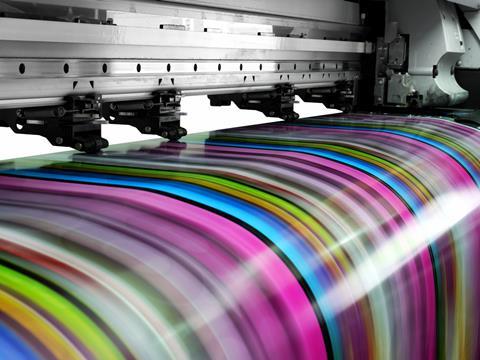
Will the COVID-19 pandemic lead to deep and lasting changes in the printing industry, or will things return to how they were? Screen Europe, a manufacturer of digital high-speed inkjet printers, labels, and packaging solutions, recently pulled together information from its European client base about how the printing industry is coping with the impacts of the pandemic. In this article, the company unpacks its key findings.
It would be presumptuous to make strong statements about the post-corona period while we’re still in the midst of the crisis. Yet, as an industry and business community, it’s important to prepare ourselves for possible scenarios, and gather as much information as we can to help us make decisions.
A tour of our European markets tells us there’s a shared belief that the corona crisis is likely to accelerate existing industry trends. We expect the transition to the automation of the printing process to gain momentum, and at least some of the print jobs we outsourced overseas to come back to Europe. This is what our representatives tell us, based on their observations and feedback from dozens of printers across Europe.
Automated printing process
In the short term, commercial print, such as newspapers, magazines, books, and brochures, have been hard hit. At the same time, many label printers are getting extra work. “In Spain, for instance, all producers of printed matter related to medicines, cleaning products, and food are doing well,” says Borja Henche, regional manager, Spain.
“Because on-time delivery is paramount, there’s no pressure on prices in these market segments either,” he adds. Rising demand for label printing can also be seen in other markets – from France, Portugal, Russia, and Turkey, to the Middle East, according to Bui Burke, senior VP of Sales at Screen Europe.
There seems to be fairly broad agreement, too, on the longer-term consequences of the corona pandemic for the print industry. “Automation is becoming crucial, both on an equipment and workflow level,” says Burke. “We’re heading towards a complete manufacturing process, from order intake to shipping or e-delivery, with fulfilling and billing fully integrated.”
Accelerated automation is expected to coincide with an increased demand for print devices that are easy to operate, and need fewer and less-skilled operators. “Because of corona, managers are more aware of the risks that their production could stall if operators fall ill or are absent for any other reason.
Highly skilled engineers can’t easily be replaced. Easy-to-operate systems requiring fewer skills make it easier to find or replace operators,” explains Burke.
Shorter print runs and faster turnaround
With lower economic activity expected in the next few years, run lengths of print jobs are expected to be shorter more often, potentially accelerating a shift to digital printing. With the exceptions of pharma and food, shorter print runs and faster turnaround times can be expected for both label printing and commercial print products, such as books and brochures.

“As run lengths get shorter, more print jobs will be suitable for digital printing,” estimates Burke. “Speed and personalisation will also be more distinctive competitive advantages.”
The coronavirus pandemic is expected to contribute to changes in the global supply chain, along with the trend toward protectionism, linked to trade disputes such as the current one between China and the US. As the pandemic revealed European companies’ reliance on Chinese suppliers, certain strategic production chains are expected to be brought back to Europe.
This might affect the print market, Screen representatives say. “Book printers in the Baltics now get print jobs that were previously outsourced to China,” says Frans Kops, Screen area director for Eastern Europe and Russia.
Bucking the trend: moving investments forward
In the short term, some printing companies will put their investment plans on hold. “We’ve seen some printers postponing their investments to 2021, as they wait for a better and more stable business climate,” says Thomas Lossec, regional manager, France.
On the flip side, some printers have brought investment plans forward to ensure they’re ready for when lockdowns ease and demand picks up. And these new investments may be disproportionately focused on digital printing, driven by the trend toward shorter print runs and faster turnaround.
“A Russian label printer, for instance, anticipates higher demand for short-run print jobs when Russia will lift its lockdown, and so has moved its investment in digital equipment forward,” says Kops. Screen Europe experienced increased demand for its products in several European markets, such as Germany. “Many of our inkjet customers are clearly still investing,” says Burke.
For Screen representatives in some markets, the jury is still out on whether corona will accelerate the shift to digital printing or not. For many printing companies, it’s simply too early to think about new investments, as they’re struggling to emerge from the initial corona shock. Some printers lost up to 70% of their business.
In countries or regions where government support for companies is absent or uncertain, for some print companies it is not certain if they or their major customers will be able to weather the storm.
Nevertheless, the overall expectation in the market is one where we’ll see the increased adoption of high-production digital presses and finishing equipment requiring high up-time ratios. At the workflow level, Screen representatives expect the demand for highly automated, fully integrated workflow systems to speed up. Machine learning and artificial intelligence are also expected to be part of the technology mix of future printing.

















